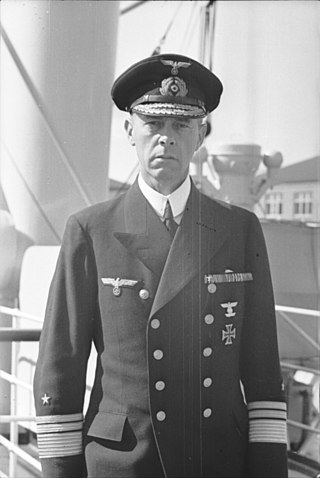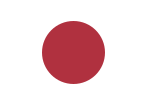
Military ranks are a system of hierarchical relationships, within armed forces, police, intelligence agencies or other institutions organized along military lines. The military rank system defines dominance, authority, and responsibility in a military hierarchy. It incorporates the principles of exercising power and authority into the military chain of command—the succession of commanders superior to subordinates through which command is exercised. The military chain of command constructs an important component for organized collective action.
Military ranks and rank insignia of Norway were changed June 1, 2016, with the reintroduction of the Non-Commissioned Officer Corps, and the abolishment of the one-tier officer system in place since 1975.

Modern Russian military ranks trace their roots to the Table of Ranks established by Peter the Great. Most of the rank names were borrowed from existing German/Prussian, French, English, Dutch, and Polish ranks upon the formation of the Russian regular army in the late 17th century.
The comparative military ranks of Korea are the military insignia used by the two nations on the Korean Peninsula, those being the Republic of Korea Armed Forces and the Korean People's Army of the Democratic People's Republic of Korea. The United States Forces Korea personnel wear the ranks and insignia used by other service personnel of the United States Armed Forces in the territories of the United States.
The Military ranks of Finland are the military insignia used by the Finnish Defence Forces. The ranks incorporates features from Swedish, German, and Russian armed forces. In addition, the system has some typically Finnish characteristics that are mostly due to the personnel structure of the Finnish Defence Forces. The ranks have official names in Finnish and Swedish languages and official English translations. The Swedish forms are used in all Swedish-languages communications in Finland, e.g. in Swedish-speaking units of Finnish Defence Force. The system of ranks in the Swedish Armed Forces is slightly different.

The Ranks of the Imperial Japanese Navy were the rank insignia of the Imperial Japanese Navy, used from its creation in 1868, until its dissolution in 1945 following the Surrender of Japan in World War II. The ranks were inspired by the ranks of the Royal Navy.
The Ranks and insignia of the Japan Self-Defense Forces are the military insignia used by the Japan Self-Defense Forces.
The Indonesian National Armed Forces (TNI) uses a simplified ranking system for the three branches of Indonesian Army, Indonesian Navy and Indonesian Air Force. Most of the ranks are similar with differences for the rank titles of the high-ranking officers. Exception exists, however, in the ranks of the service members of the Indonesian Marine Corps. While Indonesian Marine Corps is a branch of the Navy, the rank titles of the Marine Corps are the same as those of the Army, but it still uses the Navy's style insignia.
The Military ranks of South Korea are the military insignia used by the Republic of Korea Armed Forces. Due to the close military cooperation and the presence of the United States Forces Korea, South Korean ranks are inspired by the United States.
The Military ranks of the Netherlands armed forces are the military insignia used by the armed forces of the Netherlands.
The Military ranks of the Republic of China are the ranks used by the Republic of China Armed Forces. The official military rank names in Traditional Chinese are identical across all different military branches, but their English translations may be different.
The rank insignia of the federal armed forces of the Federal Republic of Germany indicate rank and branch of service in the German Army, German Air Force, or the German Navy.

The Kriegsmarine was the navy of Nazi Germany prior to and during World War II. Kriegsmarine uniform design followed that of the preexisting Reichsmarine, itself based on that of the First World War Kaiserliche Marine. Kriegsmarine styles of uniform and insignia had many features in common with those of other European navies, all derived from the British Royal Navy of the 19th century, such as officers' frock coats, sleeve braid, and the "sailor suit" uniform for enlisted personnel and petty officers.
Ranks and insignia of the Russian Federation's armed forces from 1994 to 2010 were affected by the disintegration of the former Soviet armed forces, and there were other changes in insignia design when the newly established Russian Federation came into existence. The ranks depicted below were replaced with those adopted by decree № 293 of the President of the Russian Federation on 11 March 2010. The transition began with the issue of new military uniforms to the armed services in 2008 in the Moscow area and in 2010 nationwide. The ranks of marshal of the branch and chief marshal were officially abolished as a result of the 1994 regulations.
The Military ranks of the Kingdom of Italy were the military insignia used by the Italian Armed Forces when Italy was the Kingdom of Italy (1861–1946). During the World Wars, the Carabinieri, as the then-most senior corps of the Army, wore similar insignia to those used by the rest of the service.
The Military ranks of the Kingdom of Yugoslavia were the military insignia used by the Royal Yugoslav Armed Forces. It replaced the ranks of the Kingdom of Serbia following the unification of the Kingdom of Serbia into Kingdom SHS. After the proclamation of the Socialist Federal Republic of Yugoslavia, the ranks were replaced by the Yugoslav People's Army ranks.
The military ranks and insignia of Chile are the military insignia used by the Chilean Armed Forces.
The Military ranks of the Kingdom of Hungary were the military insignia used by the Kingdom of Hungary. Following the fall of the monarchy, the ranks were replaced with those of the Hungarian People's Army.
The Military ranks of the Kingdom of Romania were the military insignia used by the Kingdom of Romania. Following the abolition of the monarchy, the ranks were replaced with those of the Socialist Republic of Romania.
The Military ranks of the Kingdom of Bulgaria were the military insignia used by the Kingdom of Bulgaria. Following the abolition of the monarchy, the ranks were also changed.








































